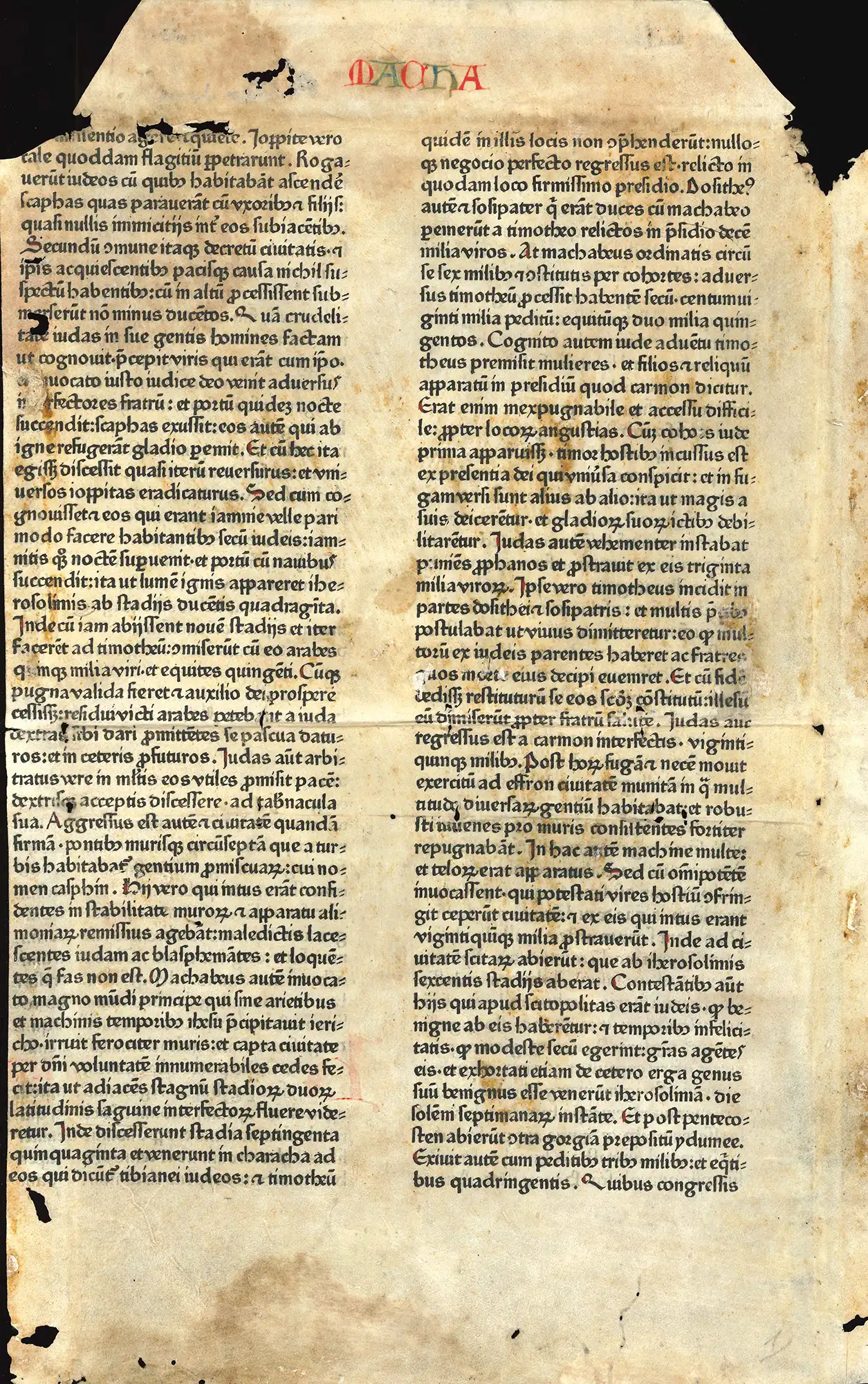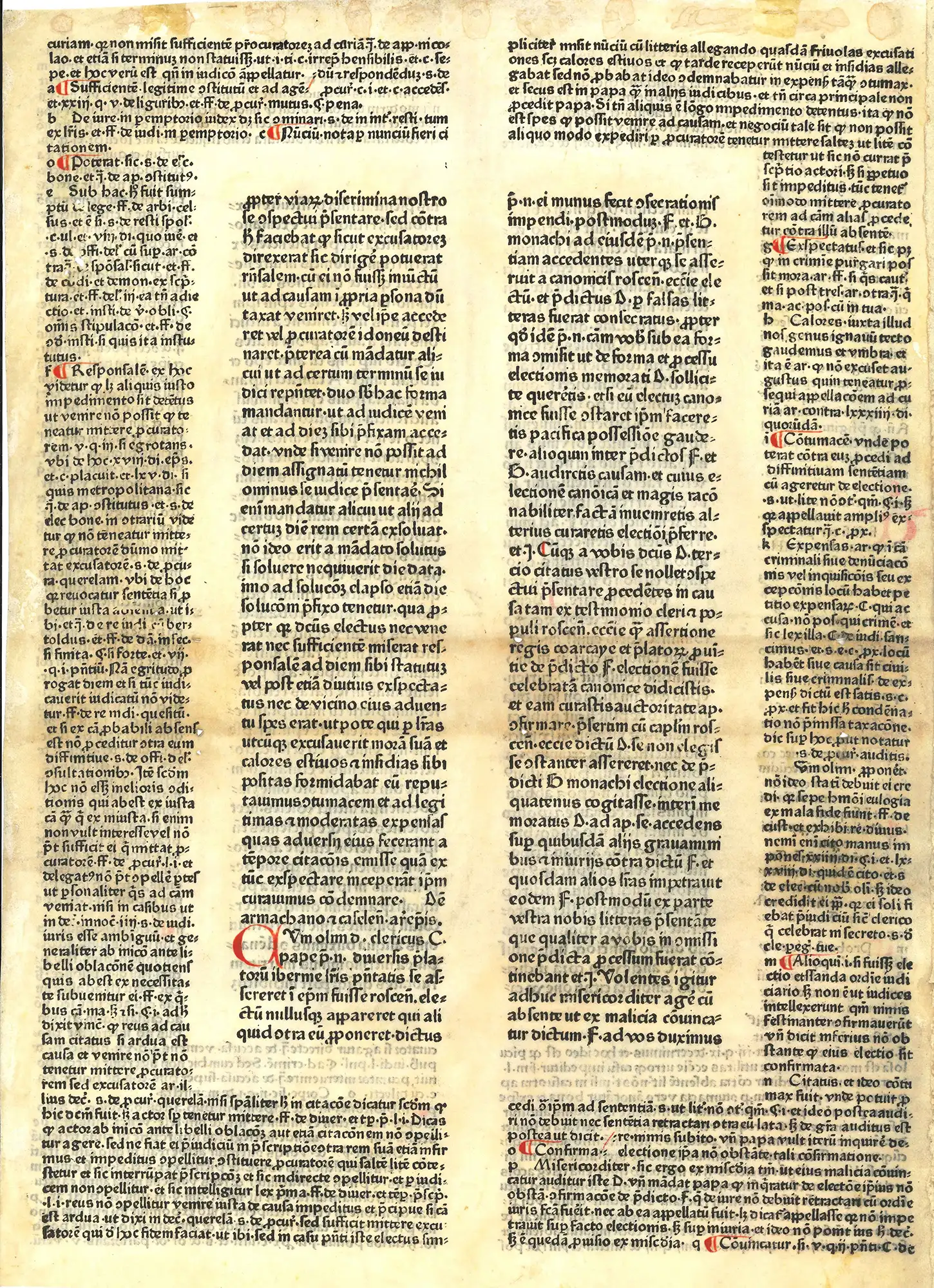Case 2
- Mainz: Fust and Schöffer

Bible. Latin Vulgate. Mainz: Johann Fust and Peter Schöffer, 1462. Single leaf. Part of Maccabees II, 11:4-12:33.
Peter Schöffer (ca. 1425–1503) was a calligrapher in Paris before becoming a printer’s apprentice under Johannes Gutenberg and later joining Johann Fust (Gutenberg’s financier) in forming the printing firm of Fust & Schöffer. The first book to come from their press was the 1457 Psalterium. The pair remained in partnership until Fust’s death in 1467.
Schöffer continued printing into the sixteenth century and is connected to more than 270 works. He is credited with being the first printer to introduce the dating of printed books, use of a printer’s device, Greek characters in type, and for printing with coloured ink.
This vellum leaf, recovered from a binding, is from the ‘Biblia pulcra’ (beautiful Bible), the fourth Bible ever printed and the first printed Bible to include a colophon.

Bible. Latin Vulgate. Mainz: Johann Fust and Peter Schöffer, 1462. Single leaf. Part of Maccabees II, 11:4-12:33.
Open image in new window

Pope Gregory IX. Decretales, cum glossa. Latin. Mainz: Peter Schöffer, 1473. Single leaf.
In outward appearance, books printed between 1450 and 1480 are almost indistinguishable from contemporary manuscripts. While early printers such as Schöffer were artisans and craftsmen, their work was their livelihood, and they were conscious that they needed to sell goods that their customers would be willing to buy.
Hence, the lawyer who needed a copy of the Decretales knew exactly what it ought to look like because he had handled it all his life. The displayed leaf is from one of several canon law folios printed by Schöffer, and its typographical arrangement reflects long established patterns. The leaf contains legal text surrounded by its commentary, arranged in two long and narrow columns of many lines in relatively small type.
The Decretals of Pope Gregory IX (Papacy, 19 March 1227 to 22 August 1241) are an important source of medieval canon law, replacing the earlier Decretals of Gratian. The text of this leaf is from the second book, part fourteen: De dolo et contumacia (On Fraud and Disobedience to Judicial Order), from the end of chapter five to the beginning of chapter seven.

